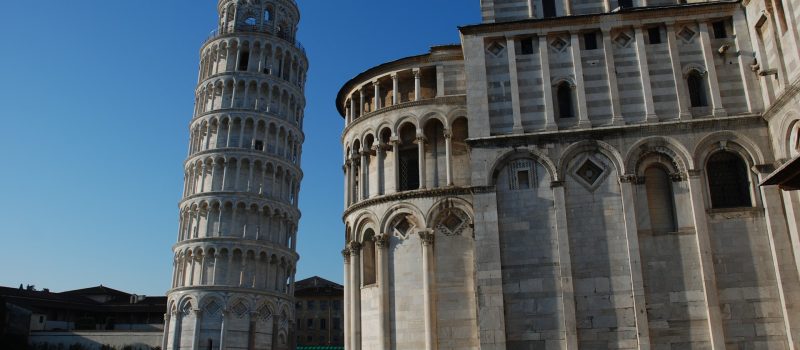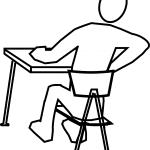
Disc Herniations and You
Normally I would go to the literature and pull out a number of research articles to provide some statistics for your information. I decided that in this blog I would talk about the large influx of low back pain from disc herniations that I am personally seeing in our facilities. Unfortunately, if you are reading this because this has happened to you, the story that I am about to tell will be far too familiar and I am hopeful I can provide you with some insight into the what happens when your back “goes out.”
Backs Don’t Go Out – They Don’t Go Anywhere
If you feel crooked and leaning over like the Leaning Tower of Pisa, you may think something is “out.” Let me start by saying that backs do not go out. People go out, joints get stuck, muscles go into spasm, nerves become inflamed or compressed, arthritic changes occur, but spines don’t go anywhere. In some extreme cases, such as in high impact motor collisions, spinal dislocations can occur. In these cases there is always going to be severe repercussions, sometimes even paralysis. I will describe one of the instances that can cause a back to become very painful, produce significant difficulties with everyday activity and make you feel like it did in fact “go somewhere”.
Disc Herniation is often the culprit
This term is very broad and describes a spinal event that, to varying degrees, causes a structural change in the tissue that occupies the space between the vertebrae. Picture your spine like a stack of building blocks from the bottom to the top, with a space between each block that is occupied by a jelly donut. The intervertebral (between the vertebrae) disc is the jelly donut. The centre of the disc is a 3 dimensional jelly like substance that is called the nucleus pulposus. It is surrounded by a fibrous tissue that appears like a series of tree rings when cut in half (called the annulus).
Over time we can develop tears in the annulus portion of the disc. Like soil – when well moistened, one can easily put their finger into the soil and make a small impression. When it dries, the soil cracks and forms fissures. The disc unfortunately acts this way as well. When this occurs, the jelly from the middle starts to move into the fissure and can cause varying degrees of outward pressure that in turn carries various symptoms.
Disc Herniations can hurt, numb, tilt and weaken
The symptoms that one can face from a disc herniation can range from a simple ache in the lower back and buttock, to the more severe pain that radiates down the leg. The distance that the pain radiates and the pattern or location of the pain is helpful to us in determining which nerve root is being irritated or compressed by the disc herniation. Often a person will appear “crooked” as though they are leaning to one side. This does not indicate that a person is “out.” In fact, it is the presence of spasm and the body’s natural response in an attempt to reduce the compression on the nerve root that causes this. Leaning over can often feel better and so you might find yourself bending over counters to feel better.
With more severe compression of the nerve root there is accompanying numbness/tingling and even weakness. This is a function of direct compression of the nerve. Much like a garden hose when it is stepped on disrupts the flow of water, so will a “squished” nerve be unable to carry the signals of sensation and motor control to the skin and muscles. In the most severe cases there can be compression of a part of the spinal cord that will effect a person’s ability to void or urinate. CAUTION: if this sounds like you, stop reading my blog and go to the Emergency department! If a person has complete numbness in a region of the seat and groin, a term we refer to as “saddle anesthesia,” this too should lead you to the Emergency department.
Paying close attention to the symptoms can also help us to determine how your injury is recovering. The more numbness and/or weakness, the worse that it is. The distance that it travels is relative to the nerve root involved and is not indicative of the severity of the injury. As a person improves the numbness subsides and is often replaced by tingling or pain in the region. It will often start to hurt up the leg and closer to the spine. This phenomena is often referred to as centralization. Sometimes, as it centralizes, the pain intensifies, and we can mistake a healing pattern for “worse” because the pain is more dominant in one spot.
Is this what I am suffering?
In the majority of instances the disc nucleus will tend to herniate posteriolaterally (toward the back and one of the sides). In these cases, symptoms are most often aggravated by sitting and bending. They tend to feel a little better with walking and standing. We often see these patients in the waiting room avoiding sitting at all cost. They can look crooked and rarely sit down.
Unfortunately it isn’t as simple as I have tried to make it:
There are so many nuances to the recovery of this condition and, as always, I must emphasize that this blog is no replacement for a medical assessment by a qualified professional. Contrary to how we would all like these problems to be straight forward, these are certainly not.
Want to hear about treatment, feel free to stop by the clinic and we would be pleased to tell you how we can help you.
In health
Grant Fedoruk
Disclaimer:
This information is not meant to replace the advice or treatment of a qualified physician or physiotherapist. It is meant for information only. Please seek an assessment and discuss your treatment options with your caregiver prior to making a decision about your treatment path.

